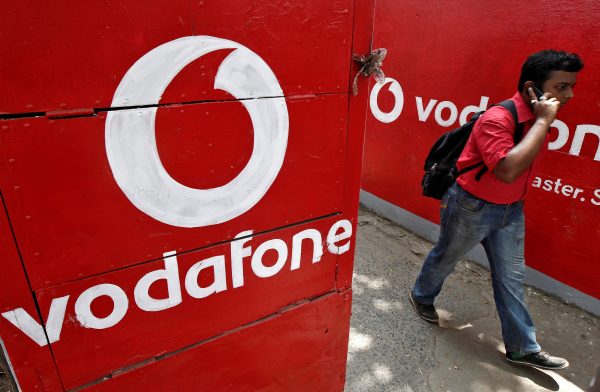The telecom industry that is building the requisite digital backbone for India is struggling. The sector once witnessed fierce competition with ten mobile operators but has now consolidated to three or four. Mobile operators will pay more than US$20 billion to the government after a long litigated regulatory fee settlement issue. This leaves most operators with nothing to invest in 5G and other future technologies.
Telecom regulatory fees in India are among the highest in the world, attracting 7–12 per cent of the gross revenue of operators. Unless this is brought down to manageable levels of 3–5 per cent, the operators will not invest in infrastructure to improve the quality of service. According to Ookla’s 2020 Speed Test Report, India is ranked 128th in mobile broadband speed with average speeds crawling at 10 megabits per second — a fraction of the speeds achieved by operators in other economies.
Data localisation and restrictions on transborder data flows also pose an issue. India benefitted as an information technology (IT) offshore outsourcing destination. The IT sector earned more than US$150 billion from free transborder data flows. But after the Facebook–Cambridge Analytica scandal, many countries, including India, are leaning towards data localisation. The primary reasons are to protect the privacy of individuals, have improved data access for law enforcement agencies to protect national security and to use localised data as an economic resource for the development of local regions.
The Reserve Bank of India (RBI) issued a directive for the complete localisation of financial data. At the same time, the Indian parliament is set to enact the Personal Data Protection Bill, which ensures stricter forms of data localisation for ‘critical personal data’. The irony is that Indian companies process the sensitive financial data of individual and companies around the world and have benefitted from weaker restrictions on data storage and processing rules in other countries. The government will also determine what critical personal data is, which leaves much ambiguity for service providers. Exemptions to the law for government agencies could also be used for unwanted purposes, political or otherwise, reduce the privacy of citizens and increase the risk of data theft and security vulnerabilities.
The deployment of 5G and other associated technologies is another key issue. In 2017, the Indian government formed a panel to evaluate and approve road maps and action plans for rolling out 5G technology in India by 2020. The government allowed network equipment manufacturers, including Chinese companies, to participate in the 5G trial. But with the regulatory tax burden looming over them, there is very little hope that mobile operators will be inclined to invest in infrastructure upgrading for 5G.
Radio spectrum, a vital resource for many communication services, including 5G, is important for network rollout. The government is adamant to not reduce the reserve price of spectrum — especially for the 700 megahertz spectrum that went unsold in the previous auction. The auction proposed to be held in the second half of 2020 may again have a dismal outcome. There is also no clarity from the government on the 26 gigahertz spectrum to be used for commercial mobile services. A major portion of this band is being used by the Indian Space Research Organisation for satellite communication.
India lacks a robust fibre-optic based backhaul network. More than 80 per cent of the backhaul network interconnecting cellular sites is on narrowband microwave. This will constrain 5G deployment. Although smart city projects were piloted in India in 2017, strong use cases for massive machine type communication and internet of things communication are still lacking if 5G is to be fully utilised in India.
The government is also pushing digitalisation, especially within the government itself. The National Payment Corporation of India, a quasi-government entity, has been successful in creating the Unified Payment Interface as a standard for digital payments. This indigenous initiative has been integrated into the Google Pay system. The Government e-Marketplace platform of the central government and other state-run e-procurement portals such as the one in Karnataka have been successful in moving the procurement of goods and services onto digital platforms. The digital identity Aadhaar card and Direct Benefit Transfer programs have enabled the direct transfer of welfare payments to poorer sections of the population on a large scale.
India is now both a substantial producer and consumer of its own IT services. This has been facilitated by home grown digital platforms such as Flipkart, Ola, Oyo, PayTM and Swiggy along with the government’s increased use of IT. India can leverage its technology capabilities and entrepreneurial mindset to leapfrog into a digital era and bolster growth and prosperity. To achieve this, the government should reduce telecom regulatory fees, set lower reserve prices for 5G radio spectrums still to be auctioned, establish less restrictive data localisation policies and provide preferential access to start-ups participating in government IT projects.
V. Sridhar is Professor at the Centre for IT and Public Policy at The International Institute of Information Technology, Bangalore (IIITB).


I wonder if the USA is behind India when it comes to technology policy and infrastructure? The USA is facing the same problems with a few companies dominating the market, not investing to provide better service, and not expanding their services to inner cities and rural areas plus preventing the government from offering such services at a better cost and more reliability. Many of these American companies pay little or no taxes plus get tax breaks and subsidies.
Even if the Indian government reduces the fees, will the Indian companies invest in providing better services at a lower cost and passed the savings to the customers. It certainly hasn’t work in the USA.